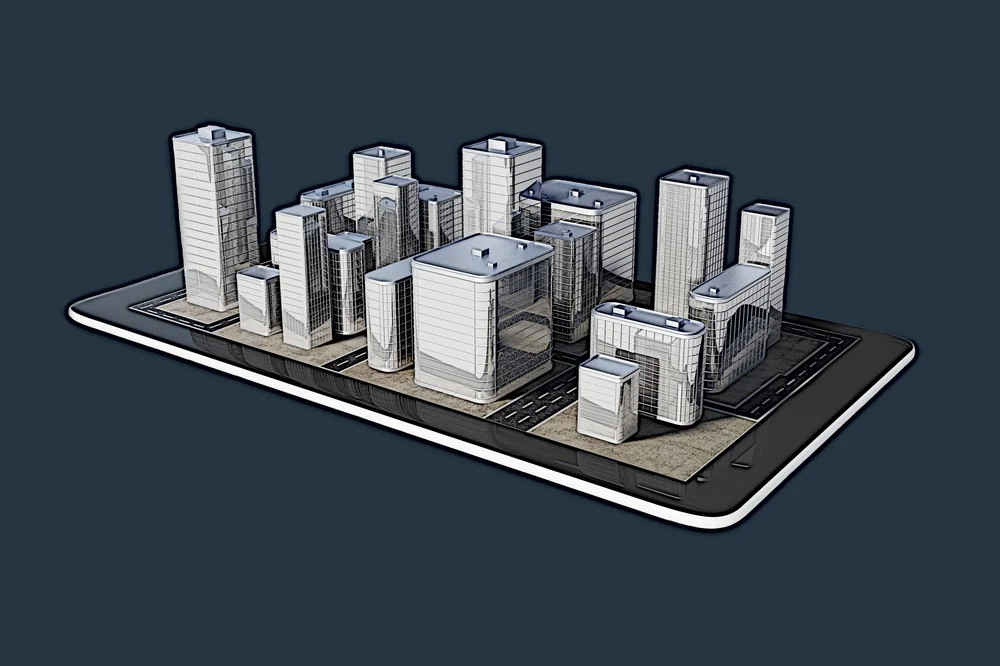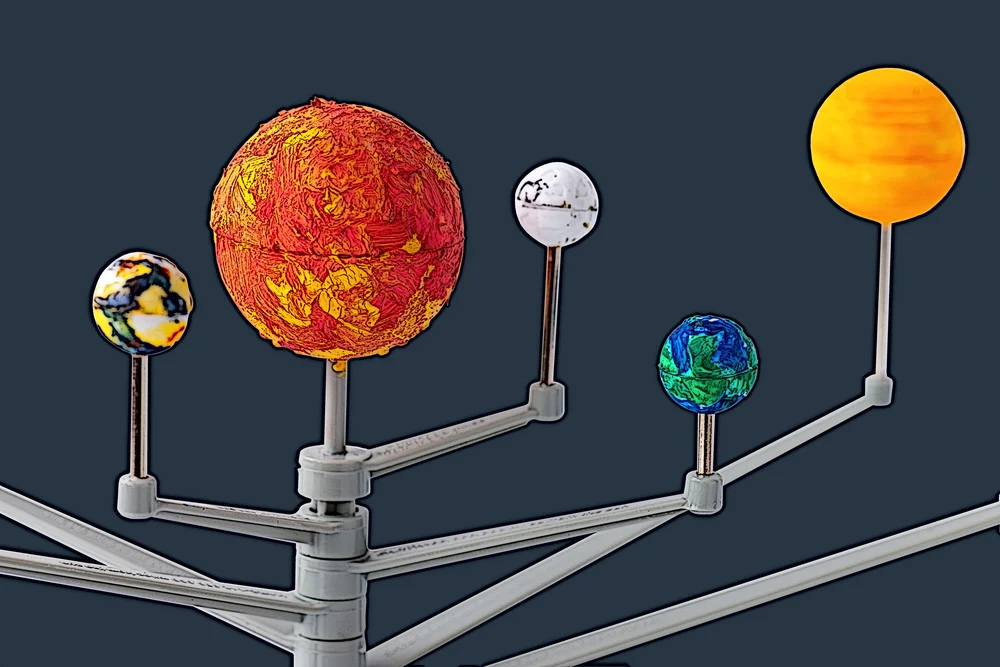A gentle introduction to agent-based simulation




Simulation methods are each valuable in a specific set of situations - each method has particular strengths and weaknesses. However, most simulation techniques represent systems without any insight into how subsystems interact with each other. Agent-Based Simulation (ABS) can be constructive in those situations. More precisely, ABS helps enterprise teams to understand how individual components of a system impact their environment and each other.
ABS is quite different from other, more “traditional” forms of simulation. ABS might therefore be challenging to grasp and implement. To hopefully help teams start using agent-based models, we will provide a high-level introduction to ABS below.
What is agent-based simulation?
ABS, (also known as agent-based modeling), focuses on the behavior and interactions of agents. Agents are separable, individual components of a system that can interact and communicate with each other. The goal of ABS is to explore the interactions between agents and their impact on their surroundings.
Agent-Based Models (ABMs) consist of the following elements:
- Agents - independent entities that have attributes, goals, and behaviors.
- Agent topology - the ruleset that determines how agents interact with each other.
- Agents’ environment - the environment in which agents exist and operate.
A more detailed overview of these components is described below.
Agents
An agent is an independent component of a simulated system. Agents possess the following characteristics:
- Autonomy. Agents are autonomous and self-directed, meaning that they can independently interact with their environment and other agents.
- Modularity. Agents are modular and self-contained, meaning that they have identifiable characteristics, behaviors, and decision-making capabilities. We can easily distinguish agents from their environment and other agents.
- Sociality. Agents are social and interact with other agents by exchanging information and influencing them.
- Conditionality. A set of internal variables describe the current condition of agents and their states over time.
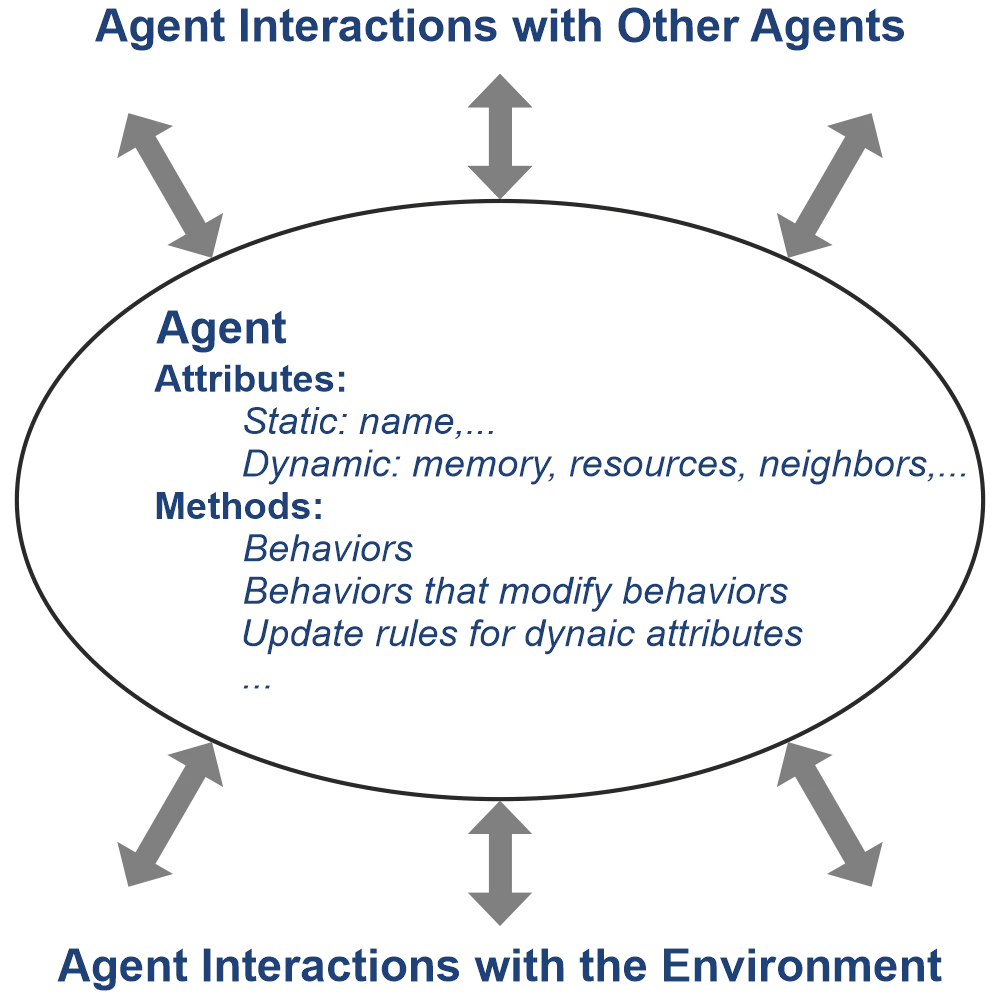
Agents can also have supplemental properties, such as:
- Goals and objectives,
- Ability to learn and adapt, and
- Memory.
Agent relationships
In ABS, agent topologies define how agents interact with each other. Examples of common multi-agent system (MAS) typologies include the following:
- Web-like topology. Agents in this topology can directly interact with other agents. All agents have the same internal structure, capabilities, operation goals, domain knowledge, and possible actions. However, agents can have limited information about each other and may not predict each other’s actions.

- Star-like topology. In a star-like topology, agents rely on coordinator (or facilitator) agents to send and receive information. Star-like systems typically consist of separate agent groups – agents in these groups can directly interact only with the members of their group. Special coordinator agents provide a connection between different groups. Often, each group of agents performs a specific task.
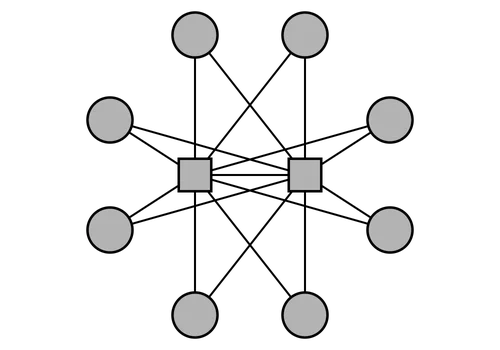
- Grid-like topology. In a grid topology, agents can only interact with other agents in their neighborhood. Grid-like topologies typically consist of areas, each with its dedicated coordinator agent. Agents access neighboring areas through their coordinators.
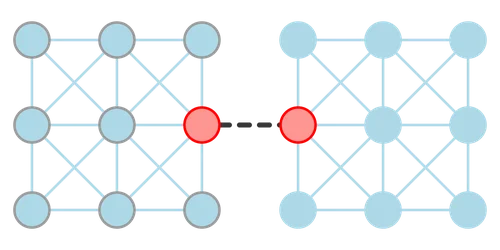
- HCAN (hierarchical collective agent network) topology. In the HCAN topology, hierarchically organized layers comprise groups of agents. Agents within the same layer are not connected to each other but are connected to agents in adjacent layers—agents at a given layer control agents at the level below them. Agents at the lowest levels collect information as instructed by higher levels. Higher-level agents can then use this information to make decisions.
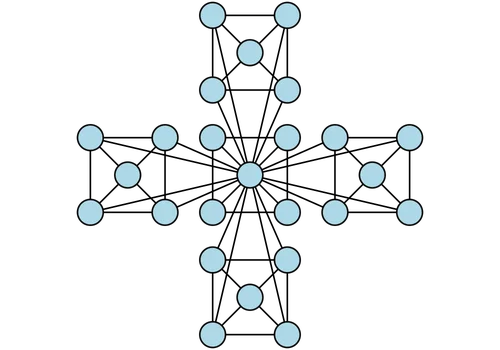
The distinctions in these topologies’ structures and communication rules make each topology suitable for a particular purpose. For example, modeling the interactions between different departments in an organization represents the HCAN topology. The web-like topology, in contrast, could be suitable for the simulation of business interactions in various markets. Additional typologies have been identified, but are not as common as those above: Soup, Euclidean space, and Geographic Information System topologies (Macal and North, 2014, December).
Agent environments
Agents and topologies operate within an environment. This environment may affect the behavior or state of the agents. Depending on the goal of simulation, environmental factors can be left out of calculations entirely. However, in systems where agents’ responses and adaptation to changing environmental conditions are essential, teams should design environments with care.
The three characteristics of agent-based simulation
ABMs have three characteristics that define their benefits, goals, and applications (Robertson, 2005):
- Heterogeneity. Unlike other types of simulation modeling, ABMs are heterogeneous, meaning that each agent in a system has a distinct state, behavior, and goals. The behavior of heterogeneous systems cannot be accurately characterized by a single metric (like an average) because collapsing all agent attributes into a single number might lead to loss of information.
- Complexity. ABMs can naturally represent complex relationships between agents and their environments, very beneficial for applications that require a fine-grained insight into the dynamics of a system.
- Emergence. Emergence is a critical characteristic of ABS. Essentially, emergence is the change of a system’s global state due to the interactions between its agents. Emergence can be counterintuitive and difficult to predict, especially in complex systems, because of the numerous interactions between agents.
Together, these features allow ABMs to:
- Predict high-level macroscopic phenomena that result from the interactions of a system’s components;
- Faithfully recreate complex systems with non-linear connections between their entities; and
- Maintain the distinctive features of agents to enable a more careful assessment of their impact on other agents and the entire system.
When to use agent-based simulation?
ABS can be helpful in a wide range of situations. Business teams should consider using agent-based modeling when:
- It is necessary to incorporate learning and adaptation into the behavior of agents.
- It is necessary to model how individual components of a system behave.
- The interactions between agents are complex, and metrics like averages or variance cannot describe such agents.
- The agents’ interactions and environments are essential and can be defined.
To summarize the points from above, ABS is best when it is necessary to observe how the interactions between individual agents can impact their system’s macroscopic state. With ABMs, team members can also check how adjusting agent behavior or attributes affects the system.
Examples of the application of ABS include simulations of individual decision-making, supply chains, stock markets, marketing campaigns, environmental planning, future needs of healthcare systems, the spread of infectious diseases, social networks, and organizational behavior.
When NOT to use agent-based simulation?
Business research teams should not use ABS for problems where:
- The individual behavior of a system’s components has little importance.
- The enterprise budget cannot handle the relatively high costs in both time and effort compared to equation-based models
- The behavior of a system’s components can be “agglomerated” and described with a few statistical measures, such as the average, standard deviation, covariance, or correlation.
- The passage of time or changes of the system state is critically important.
Next steps
Agent-based modeling is not the only simulation method - many others exist, with distinct strengths and weaknesses. ABS is functional when highlighting the interactions between system components. On the other hand, it is not an efficient choice for problems where the behavior of individual agents is trivial.
Enterprise teams should carefully review available options to choose the best simulation approach. In some situations, the ABS would indeed produce the best results. In others, business teams might need to employ some other method that is more suitable for the task at hand. Team members may wish to experiment with inexpensive/free introductory courses:
References:
Macal, C., & North, M. (2014, December). Introductory tutorial: Agent-based modeling and simulation. In Proceedings of the Winter Simulation Conference 2014 (pp. 6-20). IEEE.
Robertson, D. A. (2005). Agent-based models to manage the complex. In Managing Organizational Complexity: Philosophy, Theory, and Application, (Chapter 24), 417-430.
Zhu, Q. (2006). Topologies of agents interactions in knowledge intensive multi-agent systems for networked information services. Advanced Engineering Informatics, 20(1), 31-45.

